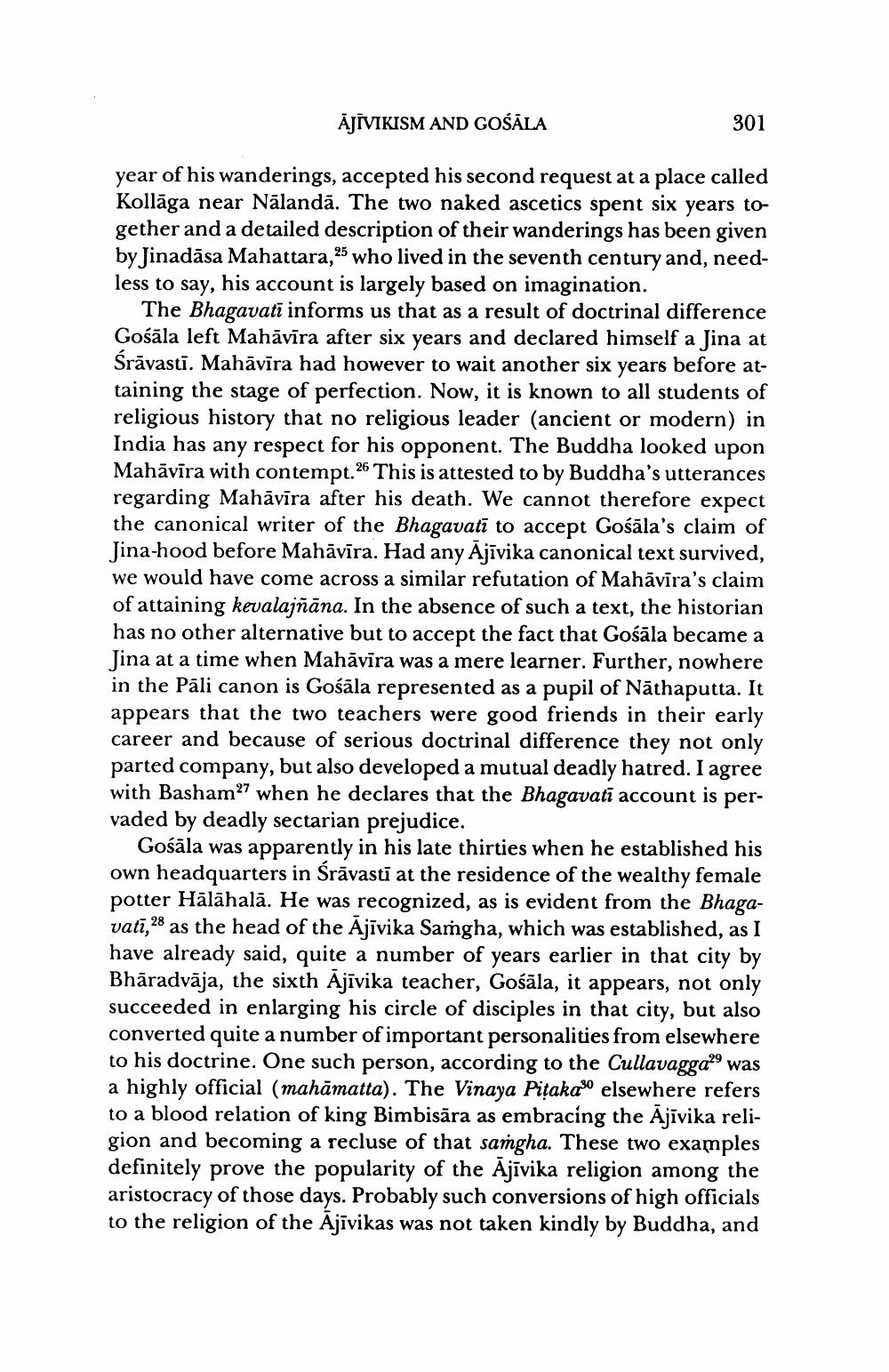________________
ĀJĪVIKISM AND GOŚĀLA
301
year of his wanderings, accepted his second request at a place called Kollāga near Nalanda. The two naked ascetics spent six years together and a detailed description of their wanderings has been given by Jinadāsa Mahattara, 25 who lived in the seventh century and, needless to say, his account is largely based on imagination.
The Bhagavati informs us that as a result of doctrinal difference Gośāla left Mahāvīra after six years and declared himself a Jina at Śrāvasti. Mahāvīra had however to wait another six years before attaining the stage of perfection. Now, it is known to all students of religious history that no religious leader (ancient or modern) in India has any respect for his opponent. The Buddha looked upon Mahāvīra with contempt.26 This is attested to by Buddha's utterances regarding Mahāvīra after his death. We cannot therefore expect the canonical writer of the Bhagavatī to accept Gośāla's claim of Jina-hood before Mahāvīra. Had any Ajīvika canonical text survived, we would have come across a similar refutation of Mahāvīra's claim of attaining kevalajñāna. In the absence of such a text, the historian has no other alternative but to accept the fact that Gośāla became a Jina at a time when Mahāvīra was a mere learner. Further, nowhere in the Pāli canon is Gośāla represented as a pupil of Näthaputta. It appears that the two teachers were good friends in their early career and because of serious doctrinal difference they not only parted company, but also developed a mutual deadly hatred. I agree with Bashama when he declares that the Bhagavati account is pervaded by deadly sectarian prejudice.
Gośāla was apparently in his late thirties when he established his own headquarters in Srāvastī at the residence of the wealthy female potter Hālāhalā. He was recognized, as is evident from the Bhagavatī,28 as the head of the Ajīvika Samgha, which was established, as I have already said, quite a number of years earlier in that city by Bhāradvāja, the sixth Ajīvika teacher, Gośāla, it appears, not only succeeded in enlarging his circle of disciples in that city, but also converted quite a number of important personalities from elsewhere to his doctrine. One such person, according to the Cullavaggawas a highly official (mahāmatta). The Vinaya Pițaka%elsewhere refers to a blood relation of king Bimbisāra as embracing the Ājīvika religion and becoming a recluse of that samgha. These two examples definitely prove the popularity of the Ājīvika religion among the aristocracy of those days. Probably such conversions of high officials to the religion of the Ajīvikas was not taken kindly by Buddha, and




